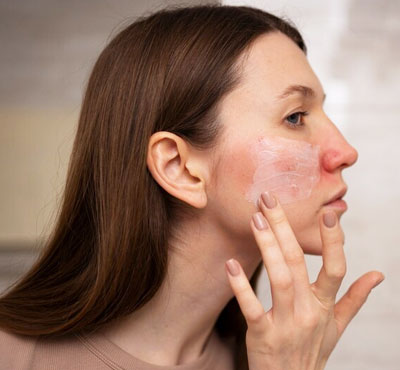Understanding Autoimmune Skin Diseases
Autoimmune diseases are conditions in which the immune system, which is programmed to fight infections and/or other intruders into our body, rather inadequately fails to defend the body's tissues. In autoimmune skin diseases, the skin is the main target with persistent inflammation and destructive effects.
Autoimmune skin disorders are heterogeneous, with different causative factors, manifestations, and therapies. However, they share a common underlying mechanism—immune Dysregulation.
Common Types of Autoimmune Skin Diseases
Psoriasis
Psoriasis is one of the most common autoimmune skin diseases which causes pain in the form of erythematous, scaly-shiny patches covered with scales that can occur over the scalp, elbows and knees. The disease is caused by the hyperactive immune system causing accelerated skin cell renewal, resulting in skin layer accumulation.
Lupus Erythematosus
Lupus can affect multiple organ systems, including the skin. Cutaneous lupus Erythematosus is a condition with erythematous, scaly, lesions that are typically photosensitive. The "butterfly rash" feature across the cheeks is a characteristic symptom.
Vitiligo
Vitiligo happens in the same way that the immune system can eliminate melanocytes (pigment cells) so that white patches appear on the skin. While the condition is not harmful, it can cause psychological distress due to its visible nature.
Dermatomyositis
This inflammatory disease affects the skin and muscles. It causes a distinctive red or purple rash on the face, neck, and hands, often accompanied by muscle weakness.
Pemphigus Vulgaris
Pemphigus is a rare autoimmune condition characterized by painful blisters on the skin and mucous membranes. It is caused by antibodies attacking the proteins that bind skin cells to each other.
Scleroderma
Scleroderma produces thickening and hardening of the skin, which is frequently the result of excessive collagen production. In severe cases, it can affect internal organs.
Bullous Pemphigoid
This syndrome involving large, fluid-filled vesicles on the skin, is a commonality in elderly individuals. It is due to the immune system attacking the interstitial structures composed of connective tissue between the skin layers.
Causes & Risk Factors
The underlying pathophysiologic mechanism of autoimmune skin diseases is still not completely understood, but several etiologic factors are involved in its development:-
- Genetics - A family history of autoimmune diseases increases susceptibility.
- Environmental Triggers - Autoimmune reactions may be stimulated by ultraviolet radiation, infection or specific drugs and medications.
- Hormonal Changes - Hormonal fluctuations, particularly in women, may influence disease onset.
- Stress - Chronic stress can exacerbate immune dysfunction, leading to flare-ups.
- Other Autoimmune Conditions - Patients with one autoimmune disease have a higher risk of developing a second.
Symptoms of Autoimmune Skin Diseases
Symptoms depend on the condition being considered but can include:-
- Persistent rashes or redness.
- Scaly or flaky skin.
- Blisters or lesions.
- White patches or discolouration.
- Skin thickening or hardening.
- Itching, burning, or pain.


